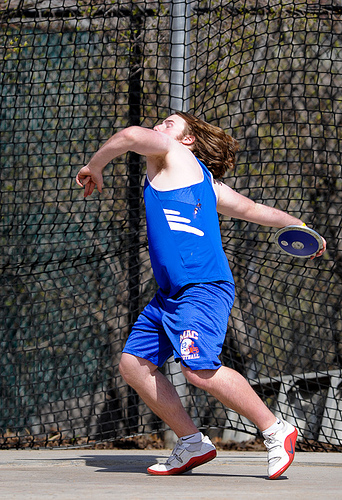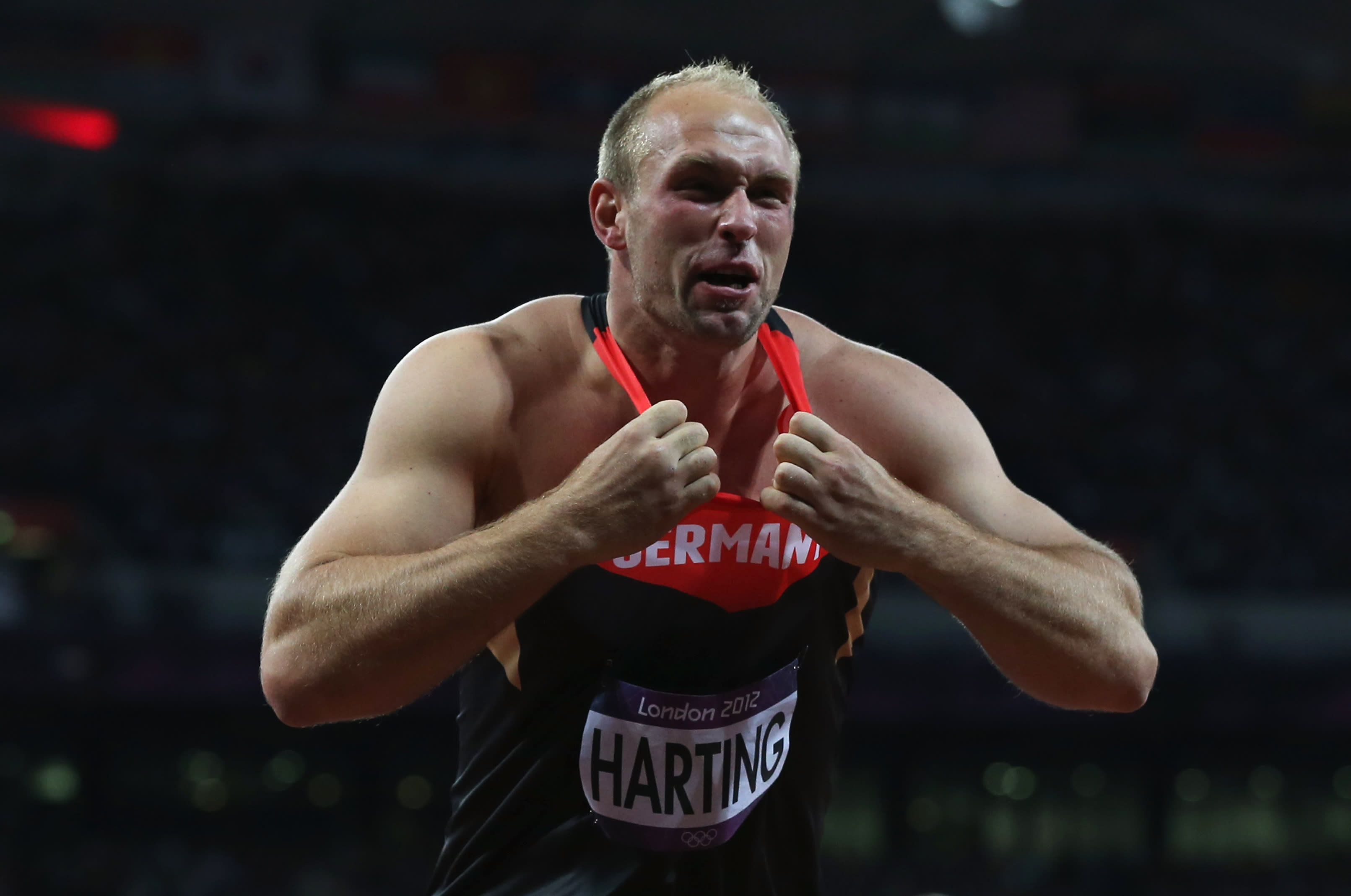
(1997) Biomechanical Research Project Athens 1997, final Report. (1997) Biomechanical analysis of the throwing events.
International Association of Athletics Federations (IAAF). The competition rules for this event are available from: The following evaluation tests can be used to monitor the Program suitable for athletes in the Event development stage: The following is an example of a specific annual training The following is an annual training program suitable for athletes in the Event Group Development stage: As all athletes have different needs, a single program suitable for all athletes is not possible. The weight specification for the discus depends on gender andĪ training program has to be developed to meet the athlete's individual needs and consider many factors: gender, age, strengths, weaknesses, objectives, training facilities etc. Knicker (1997) identifies that the optimum release angle for a world-class discus thrower may be 35°± 8°. Each athlete has their own specific optimum release angle. The structure of the body favours a throw in theĮach athlete has a unique release velocity and release angle combination that depends on their size, strength, and throwing technique. As the angle increases, the athlete must expend moreĮnergy in overcoming the weight of the discus, and so less effort is available to. This decrease in speed is a result of two factors: As the angle increase, the speed decreases. With ballistics, the same initial speed is applied to the projectile regardless of the projection angle. Research (Bartonietz 1995) has shown that athletes cannot throw at the same speed for all projection angles. To estimate the potential distance achievable when throwing the discus, enter the angle of release, the height of release, the speed of release, and then select the 'Calculate' button. The parameter that has the greatest effect on the potential distance is the speed of release of the discus. The distance achieved in the discus is dependent on three parameters: Check right thumb is pointing forward and in line with the arm. :max_bytes(150000):strip_icc()/jurgen-schult-gray-mortimore-57bba3be5f9b58cdfd8ad04a.jpg)
The left foot is kept grounded until well after the discus is.Right arm) for the discus has to take into consideration aerodynamic lift and The release angle (angle between the horizontal and the.The right arm comes through fast and last.The right arm is extended and relaxed, ready to strike.Right hip has been driven forward - note the "bow".The left-arm points in the direction of the throw.The absolute power position is at the moment the left foot contacts the ground.As the right foot lands, aim for a chin over knee over the toe.On grounding, the right foot pivots on the ball of the.
 Swing the right foot wide of the left foot into the centre. Discus kept high and relaxed, trailing behind the hips. As the right foot leaves the ground, the weight must be over. Aim for chin over knee over the toe on the left leg. Keep everything very long to provide the maximum possible. Adopt a shoulder-width stance and perform preliminary. Allow the discus to rest on the first joint of theįingers with the tips of the fingers over the rim. The first joint of the fingers curling over the rim of. Spread the fingers evenly but not stretched. Place the right hand on top of the discus.
Swing the right foot wide of the left foot into the centre. Discus kept high and relaxed, trailing behind the hips. As the right foot leaves the ground, the weight must be over. Aim for chin over knee over the toe on the left leg. Keep everything very long to provide the maximum possible. Adopt a shoulder-width stance and perform preliminary. Allow the discus to rest on the first joint of theįingers with the tips of the fingers over the rim. The first joint of the fingers curling over the rim of. Spread the fingers evenly but not stretched. Place the right hand on top of the discus. 
Place the left hand under the discus for support.However, the ancient technique of discus-throwing may have been rather different: there is no representational evidence for anything more than a three-quarter turn, rather than the two and a half turns used today, and this may be one factor making a direct comparison difficult.To achieve maximum distance in the discus, the athlete must balance three components - speed, technique and strength. Little is known of the distances achieved in antiquity, though an epigram celebrating a throw of 30 metres (95 feet) comes as a surprise in the modern world, where the current world record is just over 70 metres. This was because no one particular set of muscles was over-developed, with the result that their proportions were harmonious.Ī number of ancient discuses of either marble or metal, and of various weights, survive. Discus-throwing was the first element in the pentathlon, and while pentathletes were in some ways considered inferior to those athletes who excelled at a particular sport, their physical appearance was much admired. The popularity of the sculpture in antiquity was no doubt due to its representation of the athletic ideal.

The head on this figure has been wrongly restored, and should be turned to look towards the discus. This marble statue is one of several copies of a lost bronze original of the fifth century BC which was by the sculptor Myron (flourished about 470-440 BC).


:max_bytes(150000):strip_icc()/jurgen-schult-gray-mortimore-57bba3be5f9b58cdfd8ad04a.jpg)





 0 kommentar(er)
0 kommentar(er)
